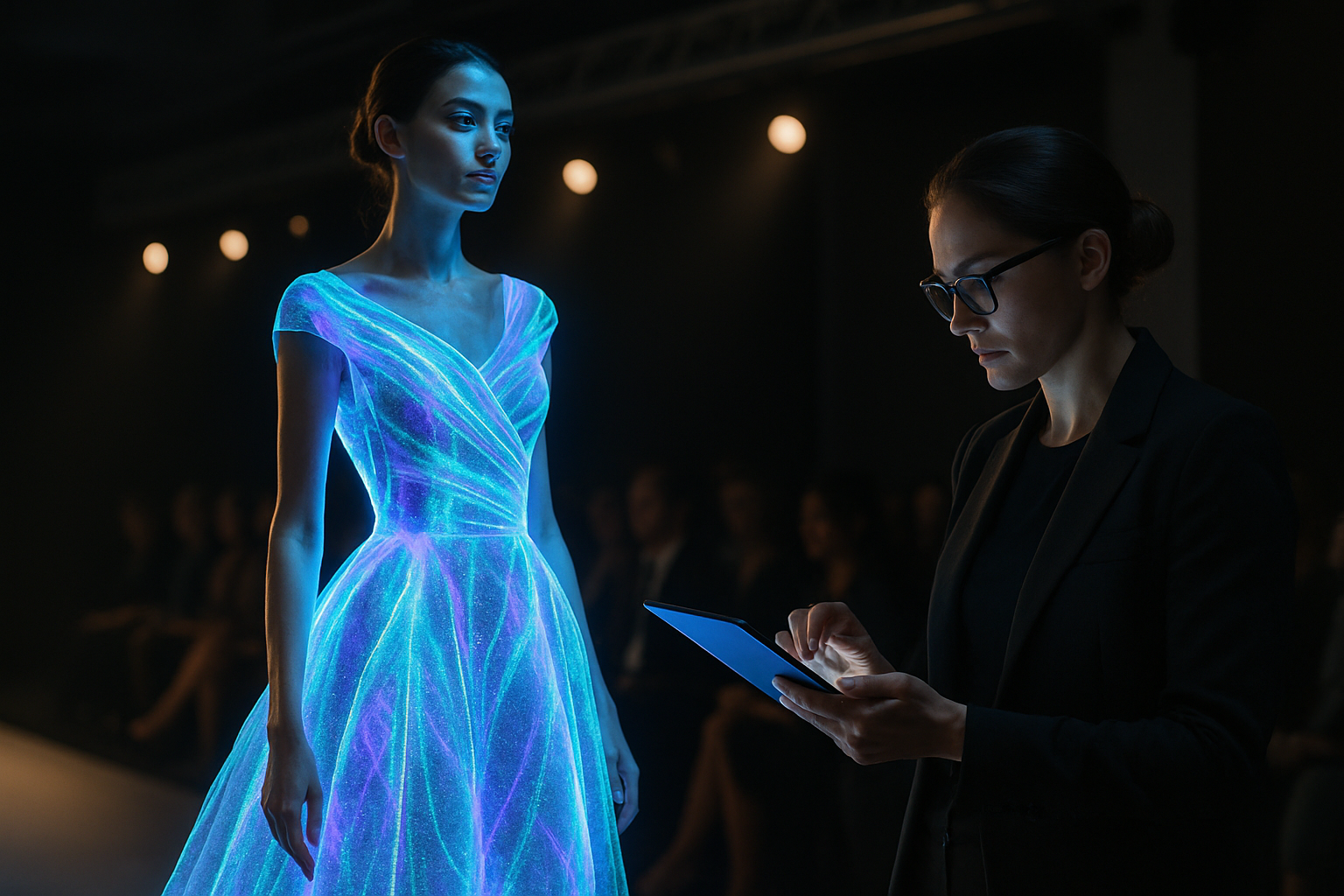Holographic Haute Couture: Fashion's Digital Frontier
In the ever-evolving landscape of fashion, a dazzling new trend is emerging at the intersection of technology and haute couture. Holographic garments, once confined to the realm of science fiction, are now stepping off the silver screen and onto the runways of Paris, Milan, and New York. This cutting-edge fusion of digital artistry and sartorial craftsmanship is not only pushing the boundaries of wearable technology but also challenging our very perception of clothing in the 21st century.

From Concept to Catwalk
The first holographic dress to make waves in the fashion world debuted at Paris Fashion Week in 2022. Created by a collaboration between a renowned French couturier and a team of Silicon Valley engineers, the garment appeared to shift colors and patterns as the model moved down the runway. This groundbreaking presentation set the stage for a new era in fashion design, where the possibilities of digital manipulation could be seamlessly integrated with traditional tailoring techniques.
The Technology Behind the Shimmer
At the heart of holographic fashion lies a complex interplay of micro-projectors, smart fabrics, and advanced software algorithms. The garments themselves are crafted from specially developed materials that serve as both canvas and screen for the projected images. Embedded within the fabric are thousands of microscopic lenses that refract light in precisely controlled ways, creating the illusion of depth and movement.
Practical Applications and Everyday Wear
While holographic haute couture continues to dazzle on red carpets and in high-end boutiques, designers are also exploring more practical applications for this technology. Imagine a single garment that could transform from a conservative business suit to a flashy party outfit with the swipe of a smartphone app. Or consider the potential for adaptive clothing that could adjust its insulation properties based on the wearer’s body temperature and environmental conditions.
Environmental Impact and Sustainability
One of the most compelling arguments in favor of holographic fashion is its potential to reduce the environmental impact of the clothing industry. By allowing a single garment to serve multiple functions and styles, this technology could significantly decrease the need for large wardrobes and frequent purchases. Additionally, the digital nature of the designs means that new looks can be ‘downloaded’ rather than manufactured, potentially reducing material waste and transportation costs.
Challenges and Controversies
Despite its potential, holographic fashion faces several hurdles on its path to widespread adoption. Critics argue that the technology is still too expensive and energy-intensive for practical use outside of high-fashion circles. There are also concerns about privacy and security, as the digital nature of these garments could potentially make them vulnerable to hacking or unauthorized access.
The Future of Fashion: A Digital Tapestry
As holographic technology continues to advance, we can expect to see even more innovative applications in the world of fashion. From interactive clothing that responds to social media feeds to garments that can display real-time health data, the possibilities are as limitless as the imagination of designers and engineers. The fusion of digital art and physical fashion is creating a new canvas for creative expression, one that blurs the lines between the virtual and the tangible.
Cultural Impact and Artistic Expression
Beyond its practical applications, holographic fashion is opening up new avenues for artistic expression and cultural commentary. Designers are using this medium to create stunning visual narratives that unfold across the body, telling stories and conveying messages in ways that static clothing never could. This dynamic form of fashion is also challenging traditional notions of identity and self-expression, allowing wearers to literally change their appearance at will.
The Role of Artificial Intelligence
As holographic fashion evolves, artificial intelligence is playing an increasingly significant role in its development. AI algorithms are being used to generate unique patterns and designs, adapt garments to individual body types, and even predict fashion trends. This marriage of human creativity and machine learning is pushing the boundaries of what’s possible in clothing design, creating a new paradigm for the industry.
In conclusion, holographic fashion represents a bold step into the future of wearable art and technology. As this innovative field continues to grow and mature, it promises to revolutionize not only what we wear but how we interact with our clothing and express ourselves through fashion. The digital runway is open, and the next generation of designers is poised to create a wardrobe that is as dynamic and multifaceted as the people who wear it.





